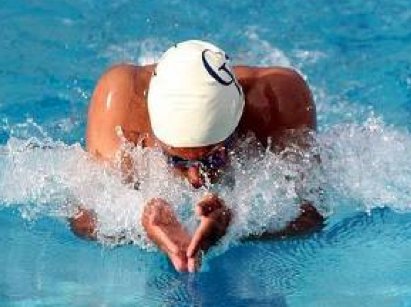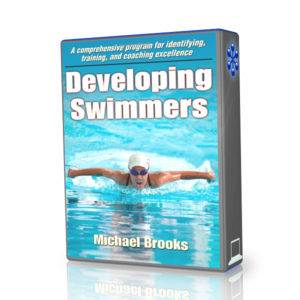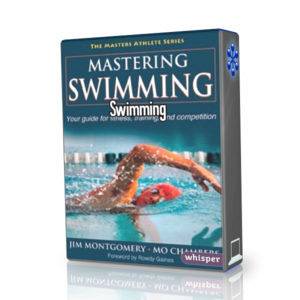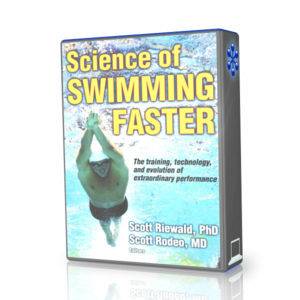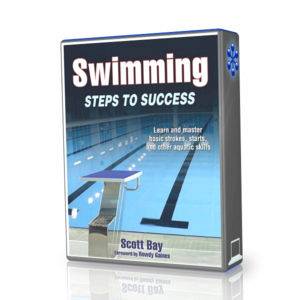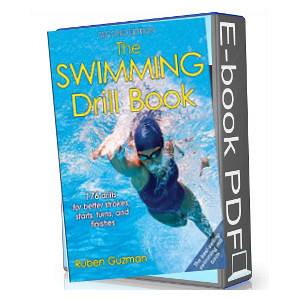Of all four competitive strokes, breaststroke requires the most precise coordination to overcome the inherent drag in the stroke, in order to produce good forward motion. By correctly sequencing and balancing the actions of the arm stroke, breathing, kick and glide, each individual action of the stroke works better. The following drills for breaststroke coordination focus on the inter-related actions of the stroke, how they overlap, and work together to create an effective stroke.
No Stars
THE PURPOSE OF THIS DRILL
- Using the most efficient breaststroke timing
- Avoiding drag
- Using the arm then the legs
HOW TO DO THIS DRILL
- Step 1 : - Push off the wall for the breaststroke, arms extended. Look at the bottom of the pool and achieve a straight spine. Notice how well you move through the water in this narrow, streamlined position.
- Step 2 : - Begin to swim breaststroke to the far end of the pool. Use a quick stroke tempo with both your arms and your legs. After several strokes, freeze at the point in the stroke when your hands are at their widest. Notice where your feet are. They should be at their narrowest point.
- Step 3 : - Continue swimming breaststroke, and resume your quick stroke tempo. After several strokes, freeze at the point when your feet are at their widest. Notice where your hands are. They should be at their narrowest point.
- Step 4 : - If your hands and feet are wide at the same time, this puts you in the star position, the most disadvantageous way to move through the water. The star position is achieved when your arms and legs are in their power phase at the same time. In this position, the arm and the leg action cancel each other out, and you produce little or no forward motion. Swim breaststroke again, checking for the star position.
- Step 5 : - To avoid the star position, your kick must follow your arm stroke with very little overlap. Begin the power phase of the legs only when your arms are well into the recovery. Try it. Push off the wall for the breaststroke. Sweep your hands out toward the corners, actively holding your ankles together in the extended position. As your arms sweep in and you breathe at the high point in the stroke, draw your heels back gently toward your buttocks. Shoot your arms into streamline without any pause. As your arms approach their narrow point forward, then kick.
- Step 6 : - Continue swimming breaststroke, performing your arm stroke and then your kick. Keep your legs still during the power phase of your arms, and your arms still during the power phase of your legs. You will achieve the best forward motion in breaststroke if you stagger the wide points of the stroke. Time your stroke so that feet are narrow when your arms are wide, and, your arms are narrow when your feet are wide. Achieve total streamline with your whole body before starting the next stroke.

DRILL FEEDBACK CHART
Problem |
Modification |
| My kick starts as my arm stroke recovery starts. | Try to hold your kick even longer so that you can avoid your recovery action working against your kick action. |
| I can achieve a more continuous stroke with my arms and legs stroking at the same time. | Breaststroke is unique in that it is not a continuous stroke. By doing arm then leg action, you will produce more forward motion with less effort, and be able to rest during the glide phase. |
| I never achieve total streamline. | Total streamline will allow you to ride the momentum of your previous stroke. If you start your next stroke before you have achieved total streamline, you will be working harder than you need to. |
Med Hassan EL HAOUAT

Stroke, Breathe, Kick, Glide Mantra
THE PURPOSE OF THIS DRILL
- Learning the correct sequence of stroke actions
- Avoiding cancelling out the effect of one stroke action with another
- Practicing the correct timing of the breaststroke
HOW TO DO THIS DRILL
- Step 1 : - Visualize the breaststroke in your mind. Say to yourself the steps in sequence of the breaststroke: stroke, breathe, kick, glide. Say it again. Stroke, breathe, kick, gliiiiiiiiide, drawing out the word glide, so it takes as much time to say as the three previous steps combined. Match each step in the sequence to the breaststroke in your mind. Stroke refers to the arm stroke, outsweep, corners and insweep. Breathe refers to the inhale. Kick refers to the power phase of the kick. Glide refers to the streamlined float that maximizes the momentum of the stroke.
- Step 2 : - Push off the wall, preparing to swim breaststroke, straight spine, streamlined position. Say the steps in the sequence to yourself again as you glide forward. Now perform the stroke actions in slow motion, repeating the sequence of steps in your mind, beginning each action when you say that step. Correctly timed, the glide should take as long as the other three actions of the stroke combined. Stroke, breathe, kick, gliiiiiiiiide.
- Step 3 : - Do another stroke, again matching the start of each action to the step as you say it to yourself. If you are following the stroke sequence correctly, your arm stroke and inhale should be finished before you begin the power phase of your kick. So, you could modify the mantra to be Stroke, breathe, then kick, gliiiiiide.
- Step 4 : - Keep practicing, and repeating to yourself the stroke sequence and timing mantra. Once you are able to perform each stroke action in order, increase your stroke rate. Notice that while the arm stroke starts first, the breathing overlaps with the insweep of the arm stroke. So, you could modify the mantra to be Stroke and breathe, then kick, gliiiiiide. The and marks the corners of the arm stroke.
- Step 5 : - Keep practicing and repeating the mantra. Notice that your arms will have already reached the extended position when your kick finishes, and your body reaches streamline. So, you could modify the mantra to be Stroke and breathe, then kick and gliiiiiide. The second and marks the point when the feet come together at the end of the kick.
- Step 6 : - Continue practicing with the fully developed mantra giving sequence and timing to your stroke. Stroke and breathe, then kick and gliiiiiide.

DRILL FEEDBACK CHART
Problem |
Modification |
| I breathe before the corners. | Try to use the lift at the corners to breathe without any independent head movement. This will keep all your stroke actions moving in a unified line forward. |
| My stroke starts with the kick. | If your kick starts your stroke, then it is likely that the breathing will be out of time, and will reduce the productivity of the kick. You might find yourself having to kick again to regain forward motion. By starting the stroke sequence with the arm stroke, position your body to kick most effectively. |
| My glide doesn't last as long as the other three steps combined. | Make sure you are kicking with flexed feet, and that your body position during the glide is downhill. Practice doing the first three steps quickly, so you gather momentum to glide better. |
Med Hassan EL HAOUAT

Glide Length, Glide Speed
THE PURPOSE OF THIS DRILL
- Developing a productive glide
- Recognizing when to start the next stroke
- Using momentum to rest and benefit the next stroke
HOW TO DO THIS DRILL
- Step 1 : - Push off the wall for the breaststroke, arms extended, hand forming the point of an arrow, looking at the bottom of the pool. Watching the bottom of the pool, glide until you come to a complete stop. Stand and make note of your distance.
- Step 2 : - Again, push off the wall for the breaststroke. Watch the bottom of the pool, and this time glide until you start to slow down. Stand and compare your distance to your first glide. Notice that there is not much difference in the distance you have travelled. By gliding until you completely stop, you use much more time to travel a little more distance.
- Step 3 : - Try the comparison again with a glide plus a stroke. First push off and glide until you stop. At that point do one complete breaststroke. Stand and make note of your distance. Again push off the wall. This time, just as you start to slow down, do one complete stroke. Stand and compare your distance to your first glide and stroke. Notice that you have travelled the same distance, or even farther with the second method. By bringing some of the momentum with you into the stroke, the length of your glide may be shorter, but you travel father overall.
- Step 4 : - Try the drill again several times. Focus on finding the exact point where you maximize the length of your glide without sacrificing speed or momentum.

DRILL FEEDBACK CHART
Problem |
Modification |
| A longer glide seems to be easier. | Looking at it in terms of swimming a few strokes, it probably is easier. However, if you have to keep swimming for more than a very short distance, it will be require less swimming time to cover that distance if you rest during your glide, but carry some momentum into the next stroke. In this way, your effort is reduced because you don't have to start the next stroke from a still position. |
| I am not gliding very far before I float to the surface. | Make sure you are looking at the bottom of the pool during your glide. Also make sure that your fingertips are pointed forward, not upward. Push off with force. |
| I am not producing very much momentum with my kick. | Make sure you are using flexed feet to kick, and that your kick is following a rounded path. Also make sure you are achieving a downhill streamlined position to glide. |
Med Hassan EL HAOUAT

Thread the Needle
THE PURPOSE OF THIS DRILL
- Achieving coordinated forward motion
- Maximizing streamline and momentum
- Learning to rest during the glide instead of the recovery
HOW TO DO THIS DRILL
- Step 1 : - Push off the wall preparing to do the breaststroke. Focus on your body position while gliding forward. It should be long, narrow and streamlined. Your head should be tight between your elbows, and you should be looking at the bottom of the pool. Your legs should be extended and together, toes pointed. This is the position you should strive for with each glide. It is the position that makes the smallest hole in the water. First made with your fingertips, it is the same hole passed through by your forearms, elbows and head, shoulders, chest, hips, legs and finally your feet.
- Step 2 : - Begin to swim breaststroke, focusing on achieving a long, narrow streamlined glide after each kick. Try to get back to the streamlined position as quickly as possible after each stroke. Notice that you don't have to wait until you have fully achieved streamline to make your small hole in the water. Begin as you recover, shooting your hands forward to a long narrow point before your feet have finished kicking.
- Step 3 : - Pretend the small hole that you pass through in your glide position is right in front of you as you transition into recovery. Pretend you have to pass through it like your were thread passing through the eye of a needle. Create a narrow lead- ing edge with your hands. Keep your chin low and shoot your elbows forward, with your forearms close together as your chest and head drop down.
- Step 4 : - Maintain a firm spine as you thread the needle through recovery, achieving streamline the instant your feet come together and through the eye of the needle at the end of the kick. Notice that the recovery in breaststroke works best as an active part of the stroke action, unlike in other strokes where a swimmer can use recovery to rest. In breaststroke it is after the recovery, during the streamlined glide that the swimmer has a moment to rest.
- Step 5 : - Continue practicing, threading the needle with each stroke, from the beginning of the recovery through to the end of the kick.

DRILL FEEDBACK CHART
Problem |
Modification |
| My head is not in streamline until after the kick. | Use a low chin breathing position, with a quick arm recovery, so your head will drop between your elbows as soon as they are straight, threading the needle with your arms and head, as you achieve a full upper body streamline during the kick rather than after it. |
| My hands begin recovery out of the water. | This is fine. It means you have produced major lift through the arm stroke. It is important to make a smooth transition from the breathing position into the streamlined glide. Shrug your shoulders up then down and forward, and, shoot to streamline. Doing so should aim your arms downhill into the water, and lead the rest of your body into the glide position. |
| My hips are low at the end of recovery. | Make sure you are looking at the bottom of the pool and not forward. Looking forward at this point in the stroke will cause your hips to drop. Also, make sure that you maintain a firm spine and drop your chest down before your arms reach streamline. This will shift your weight forward. |

